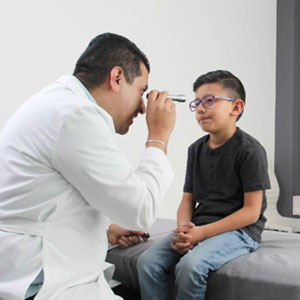What You Need To Know About Medical Child Abuse

- Challenges faced by law enforcement, prosecutors, and the legal system in investigating and prosecuting these complex cases.
- Exactly what medical child abuse entails.
- The complexities associated with identifying medical child abuse, as well as some signs and symptoms.
What Is Medical Child Abuse?
Medical child abuse – formerly known as Munchausen by proxy – involves the misuse of the medical system to inflict harm on a child, irrespective of the caregiver’s motivation. This encompasses unnecessary emergency room visits, excessive doctor appointments, un-needed medical tests or procedures, and unwarranted hospital admissions. The shift in terminology from Munchausen by proxy to medical child abuse was aimed to eliminate the requirement that the caretaker’s actions were aimed at drawing attention to themselves.
What Are The Complexities Of Medical Child Abuse?
Medical child abuse, formerly known as Munchausen by proxy, presents unique challenges in the legal realm, where the diagnosis is more forensic and legal than truly medical. The evolution from Munchausen by proxy to medical child abuse was driven by the complexities faced by courts and legal entities. These challenges related to intent, degree of abuse, investigation, and prosecution.
Intent and Degree
In the era of helicopter parenting rampant in 2023, distinguishing between vigilant care and medical child abuse hinges on the element of intent. While the motive to seek attention for the caretaker was removed, proving intent remains pivotal in prosecutions. Most child abuse charges, including those related to medical child abuse, are specific intent crimes, necessitating proof that the caretaker intended to cause harm to the child through medical procedures.
The degree of child abuse varies based on the level of harm intended. For instance, in Michigan, a first-degree charge requires evidence that the caretaker intended to cause serious bodily injury. The degree of harm determines the severity of the offense.
Legal Complexities
Investigating and prosecuting medical child abuse cases pose formidable challenges. The nuanced nature of proving the caretaker’s intent adds layers of complexity. Due to the complex nature of these cases, law enforcement, prosecutors, and the legal system face hurdles in investigating, charging, and taking them to trial. The focus on establishing intent underscores the legal intricacies surrounding these cases.
What Are The Signs And Symptoms That Can Indicate Or Be Mistaken For Medical Child Abuse?
Identifying signs and symptoms that may be mistaken for medical child abuse is a complex task due to the breadth of potential indicators there are. Child abuse pediatricians often focus on patterns of repeated visits to doctors and hospitals by caretakers. However, this approach has limitations, as highlighted by the complex and nuanced universe of medical specialists and subspecialists.
The signs and symptoms often associated with medical child abuse include:
- Unexplained failure to thrive;
- Blood-related issues;
- Hemoglobin irregularities;
- Developmental delays;
- Insufficient growth;
- Weight gain problems;
- Not absorbing or processing nutrition;
- Serious/unexplained diabetes;
- Serious/unexplained hypoglycemia;
- Sepsis and other infections;
- Difficulties in digesting food.
These varied indicators contribute to the complexity of accurately identifying cases of medical child abuse.
Modern medicine and science have made significant advances, but there are still gaps in understanding various disease processes. Despite their efforts, doctors may encounter cases where a child is unwell, and the cause remains unclear. In these situations, the difficulty of diagnosing the disease or condition might lead to a ‘garbage can’ diagnosis, where medical child abuse becomes a catch-all explanation.
As mentioned, a prevalent factor in medical child abuse cases is the diagnosis of failure to thrive. This diagnosis occurs when a child isn’t growing, gaining weight, or meeting developmental goals as expected. Doctors often use the process of elimination to rule out other potential illnesses, such as diabetes or hemophilia. However, when doctors exhaust all possibilities without finding a clear explanation, the focus may shift to the parents, raising questions about their caregiving practices.
The pressure on doctors to find answers can inadvertently result in accusing parents of intentional harm. Parents may be accused of injecting insulin, withholding food and medicine, or even intentionally causing bleeding to create a low blood count. Accusations of this nature are severe and can lead to criminal prosecutions and the removal of parental rights, often based on speculation rather than concrete proof in a medical child abuse case.
From a legal perspective, relying on a diagnosis that stems from the inability to identify a cause poses significant challenges. Accusations without clear evidence place parents in the challenging position of proving a negative — demonstrating they are not abusing their child.
For more information on Medical Child Abuse, an initial consultation is your next best step. Get the information and legal answers you are seeking by calling (248) 509-0056 today.

Call Today For Your Free Case Strategy Session
(248) 509-0056
